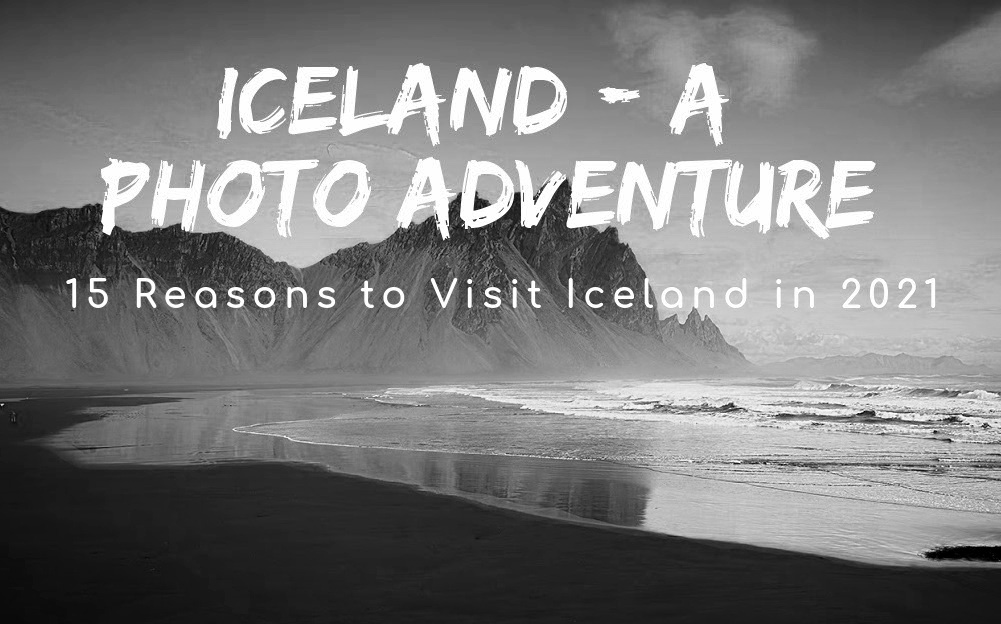
Travels to Iceland – A Photo Adventure B/W
(20 Reasons to Visit Iceland in 2021)
Have you ever visited a place that makes you feel alive with its breath-taking landscapes? Well, Iceland is one of those places. Around every corner is an experience you won’t forget. With its epic landscapes, volcanoes, basalt column cliffs, sea stacks with mythical legends, ancient lava flows in giant lava fields, black sand beaches and so much more, Iceland should be in your bucket list for 2021. Iceland is called the “Land of Fire and Ice” because it is a country of extremes, with glaciers and volcanic springs located next to each other and there’s nothing like in all the world. It was hard to fathom what we were in for at the start of our trip – but it would change our outlook of the world forever. We spent 7 days photographing the southern coastline from east to west, then travelling up to Kirkjufell Mountain and Arnarstapi fishing village on the western coast. In this issue, we will explore these sites together. We’ve decided to present this Iceland portfolio in black & white to capture the drama of this place. Hope you enjoy the photos.
All photos were taken with either my Canon EOS 6D camera using a collection of my favourite lens – EF-16-35mm F/4L IS USM / EF-24-105mm f/4L IS USM / EF-70-200mm f/2.8L IS USM.
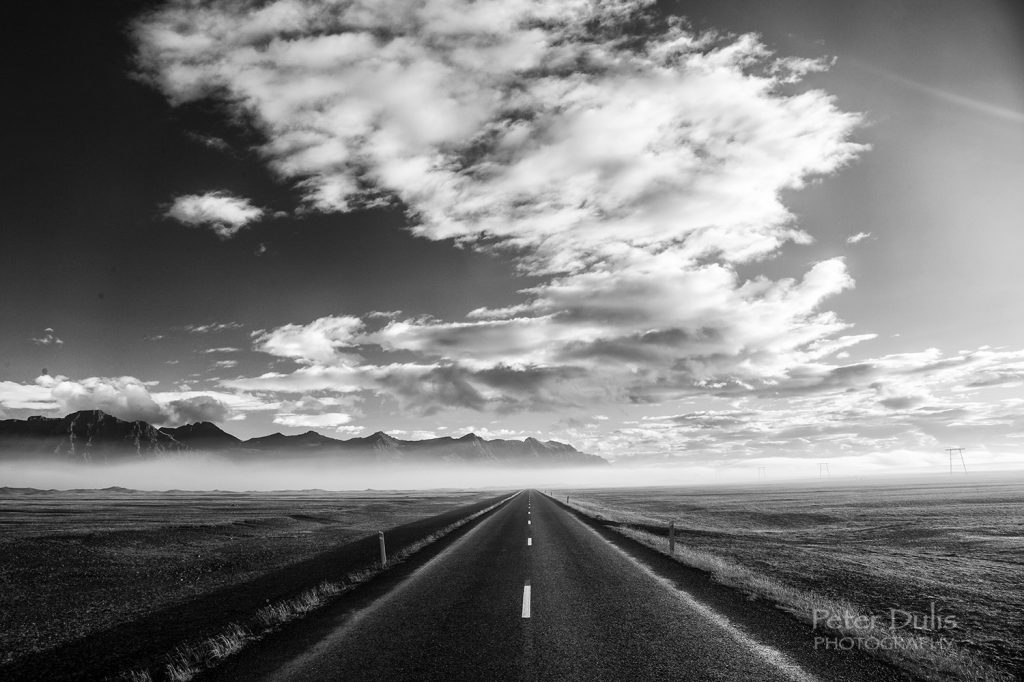
Iceland Endless Road Adventures
After landing in Reykjavik (a 10-hour night flight from Toronto) we drove 6 more hours to Hofn on the western side of the island. This is where our Iceland adventure started. We would stay 2 days in each location – Holn – Vik and finally Reykjavik, before flying back home. This endless road photo is typical of the road that circles around the parameter of Iceland. This photo was taken with my Canon 6D camera with an EF-24-105mm lens; in AV mode at 1/40 sec; f/11 with an ISO setting of 100.
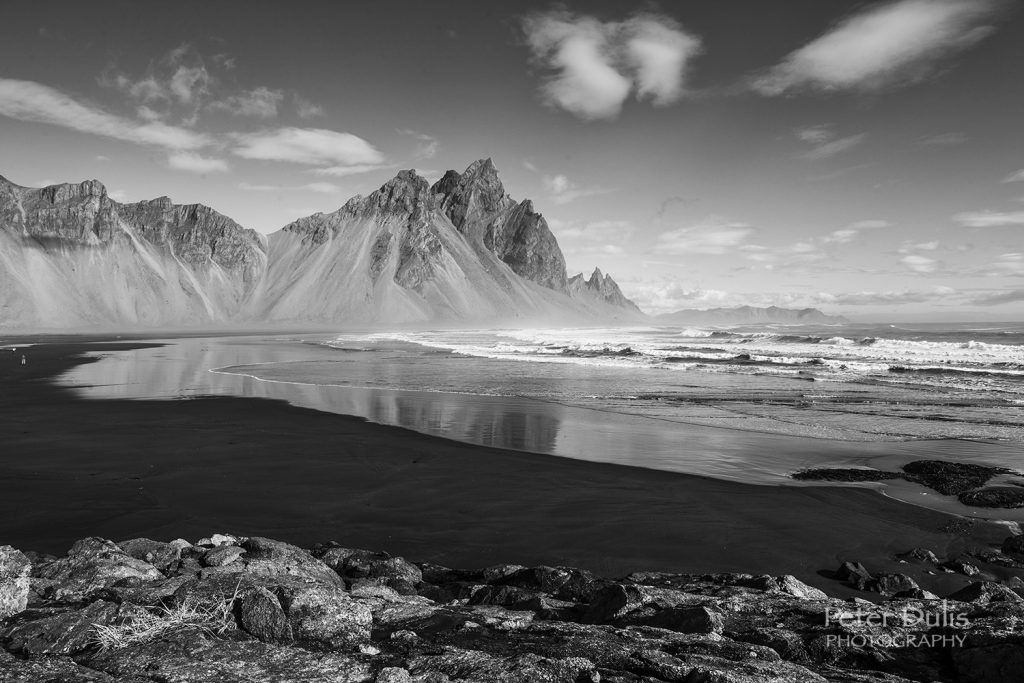
Vestrahorn Mountain
Vestrahorn Mountain is about a one hour drive outside of Hofn. Here you can find an area with breath taking beauty at its best. Dramatic peaks reach up to 1490 ft. with a flat, black sand beach stretching out front. This mysterious mountain has been captivating visitors for years with its fabulous photo opportunities. This photo was taken with my Canon 6D camera with an EF-24-105mm lens; in AV mode at 1/250 sec; f/11 with an ISO setting of 100.
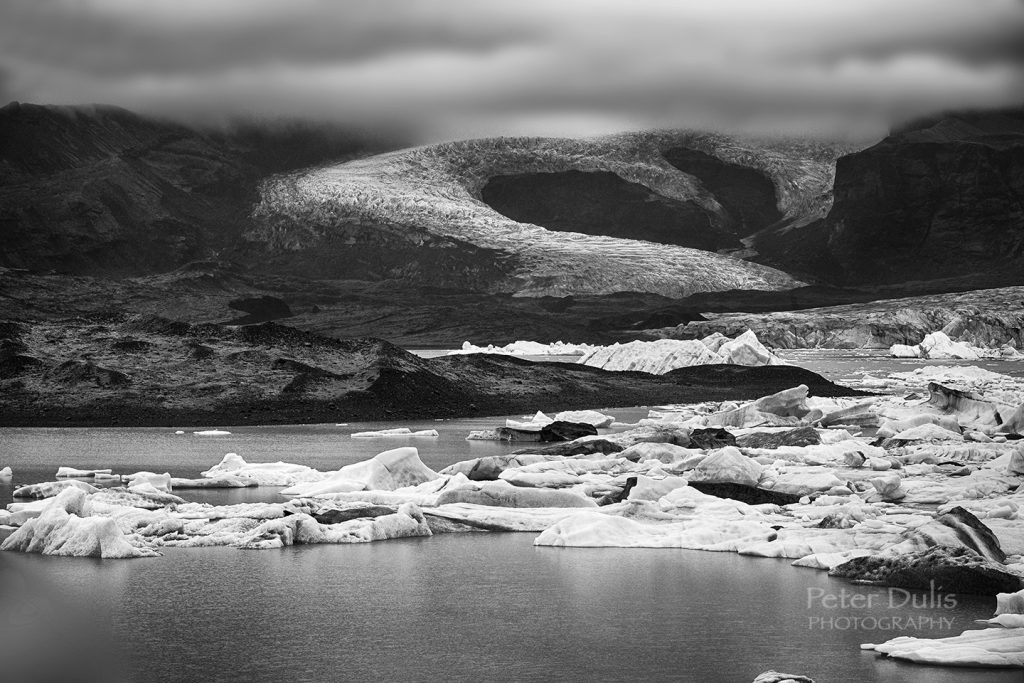
Jökulsárlón Glacier Bay Lagoon
The landscape as you travel around the town of Hofn is incredible. During our stay in Hofn, I really wanted to see was the Glacier Lagoon, Jökulsárlón. This was truly one of the most incredible spots we visited in Iceland, and anywhere in the world for that matter. Icebergs break off from a nearby glacier and make their way from the bay into the ocean. You can sit there for hours watching the passing by of these glaciers as the make their way through the channel and then out into the ocean. There the violent waves wash many of the icebergs back onto shore. This photo was taken with my Canon 6D camera with an EF-24-105mm lens; in AV mode at 1/100 sec; f/9 with an ISO setting of 500.
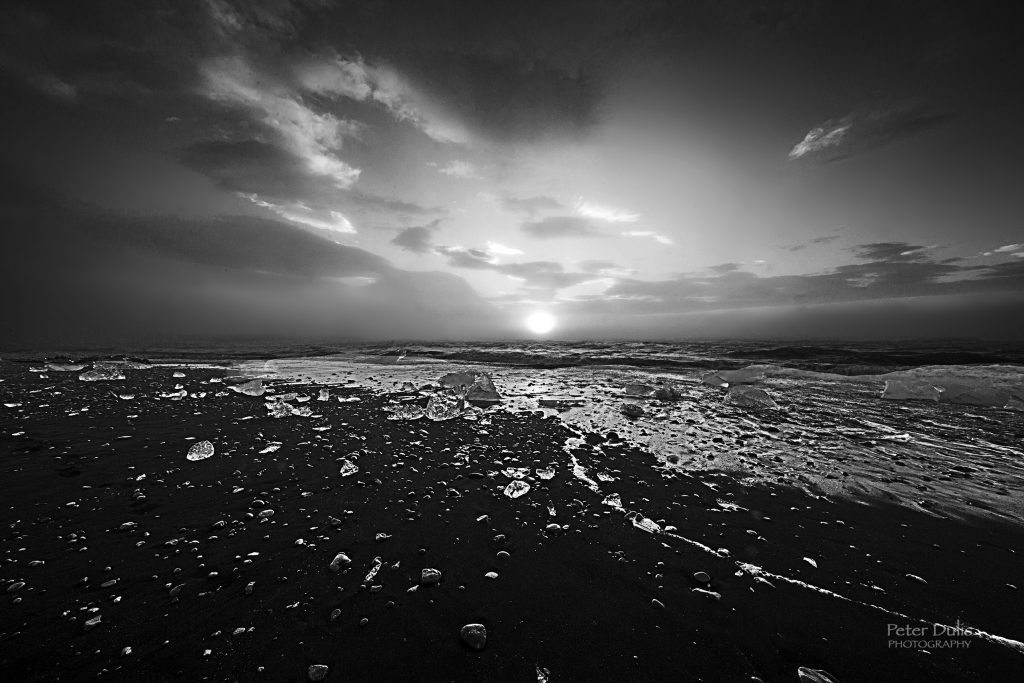
Diamond Beach Sunrise
This location is definitely one of a kind. There’s nowhere else in the world where you can see huge pieces of ice scattered across black volcanic sand. These pieces of ice have been washed ashore from the Atlantic ocean after having escaped from the Jökulsárlón glacier lagoon. I cam here at sunrise to catch the glistening light as it reflected through the icebergs. This photo was taken with my Canon 6D camera with an EF-11-24mm lens; in AV mode at 1/30 sec; f/20 with an ISO setting of 500.
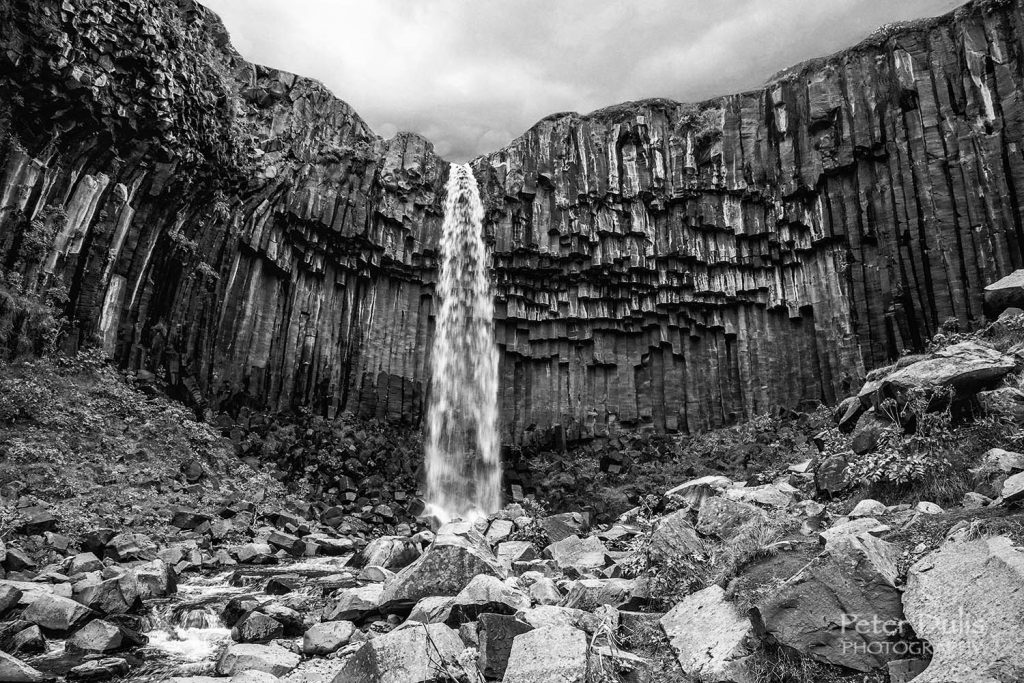
The Great Svartifoss Waterfall
Ice-cold meltwater from the Svinafellsjokull glacier feeds the famous Svartifoss waterfall. The waterfall tumbles down 80ft over a cliff which is bordered on both sides by tall black basalt columns, resembling pipes of a giant organ, which is where the waterfall gets its name. This was quite to climb up the hill to get to this spot, but it was worth it. This photo was taken with my Canon 6D camera with an EF-24-105mm lens; in AV mode at 1/40 sec; f/11 with an ISO setting of 250
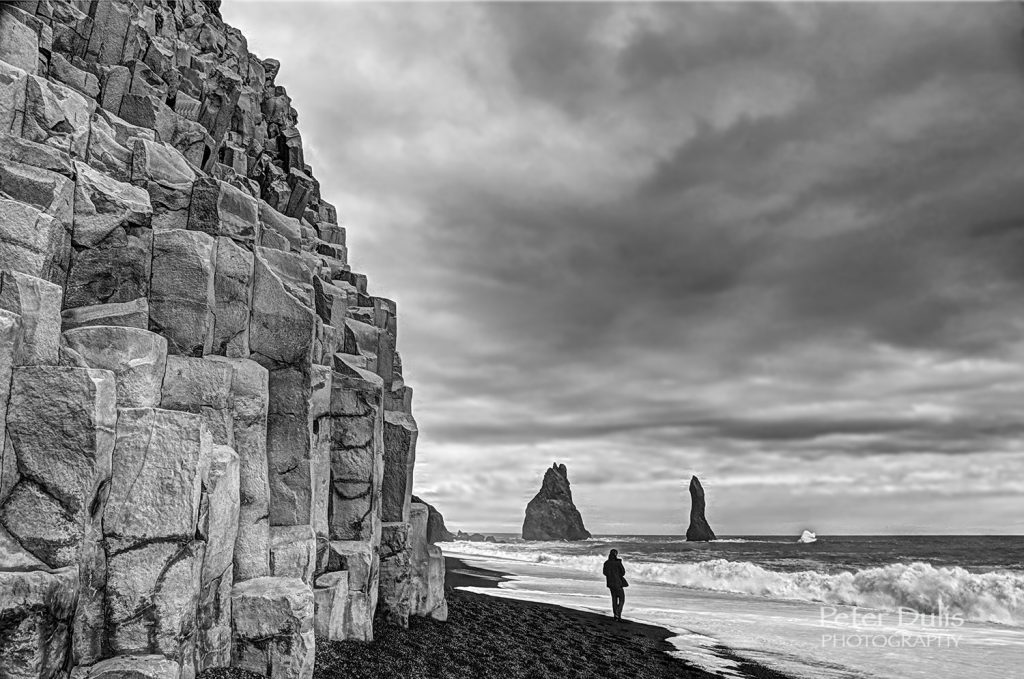
Reynisfjara Black Sand Beach
Our next adventure took us to the town of Vik. Just outside of town stand three black basalt columns in the stormy North Atlantic. Legend has it that the rocks are three trolls, caught out too late and frozen by the early morning sunlight. We slept at Volcano Hotel for the next 2 nights, just beneath the glacier volcano Katla in the Mýrdalsjökull glacier. I woke up one morning with a rumbling in the bed. The volcano was certainly active. This photo was taken with my Canon 6D camera with an EF-24-105mm lens; in AV mode at 1/100 sec; f/11 with an ISO setting of 100.
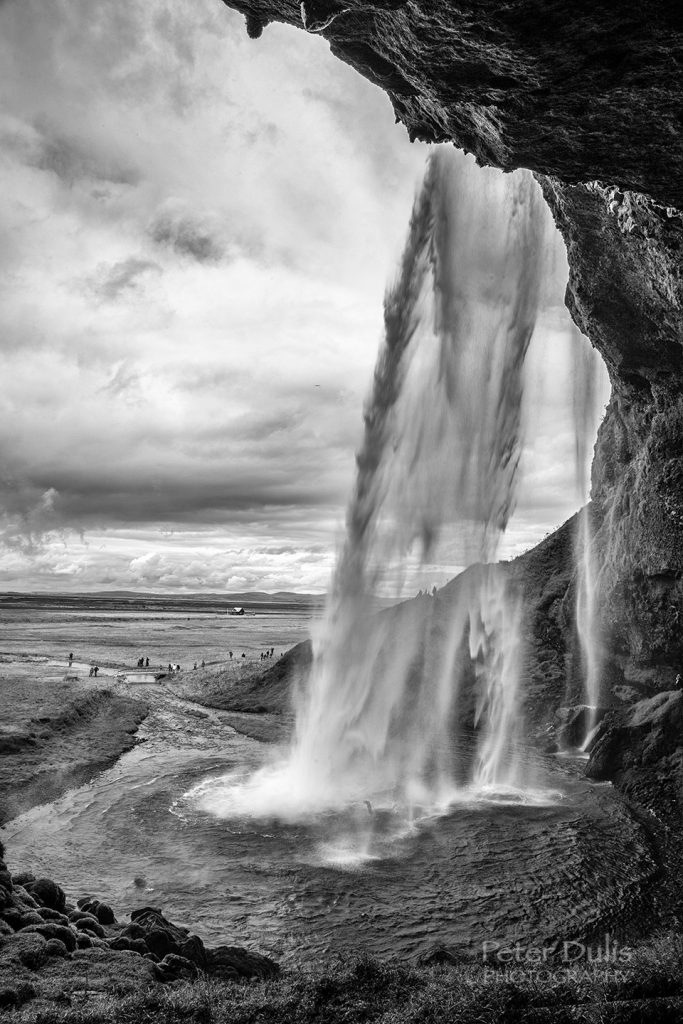
Seljalandsfoss Waterfalls
Seljalandsfoss is one of the best-known waterfalls in Iceland and I was lucky enough to climb behind the falls to capture the landscape as well. The waterfall drops 197 ft and is part of the Seljalands River that has its origin in the volcano glacier Eyjafjallajökull. This region around Vik is full of beautiful waterfalls. This photo was taken with my Canon 6D camera with an EF-24-105mm lens; in AV mode at 1/60 sec; f/16 with an ISO setting of 100.
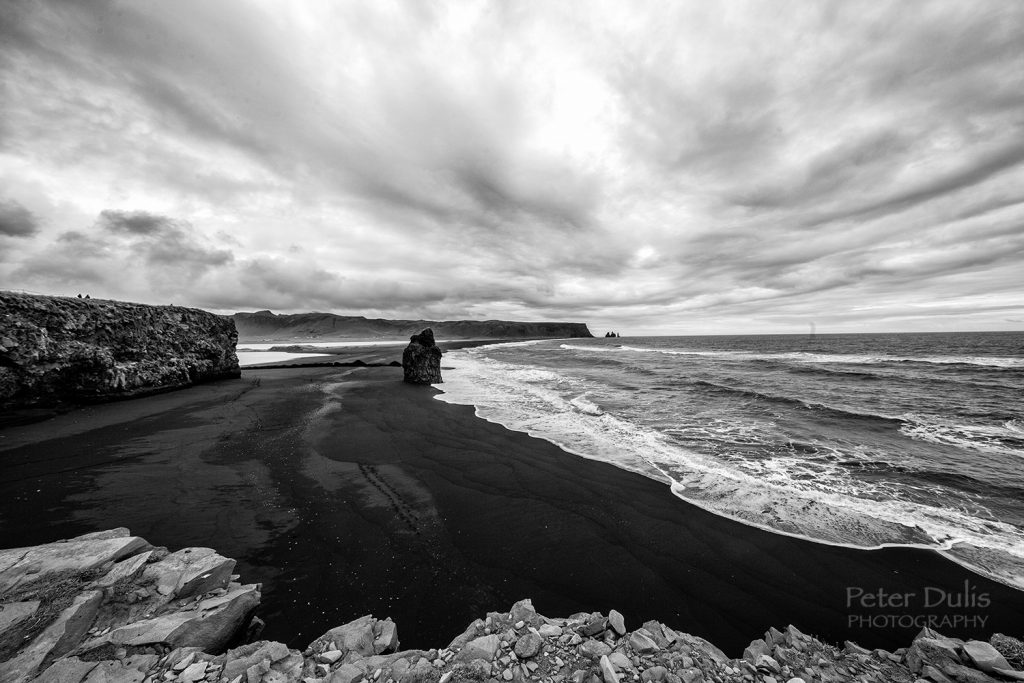
The Dyrhólaey Shoreline
Iceland’s south shore is quite scenic and dramatic and is definitely my favourite. There’s a feeling of remoteness and great splendour at the same time. Dyrhólaey has a 400 foot high raised mass of land that projects out into the water, not far from Vík. Breathtaking views can be had on all sides. This photo was taken with my Canon 6D camera with an EF-11-24mm lens; in AV mode at 1/60 sec; f/11 with an ISO setting of 100.
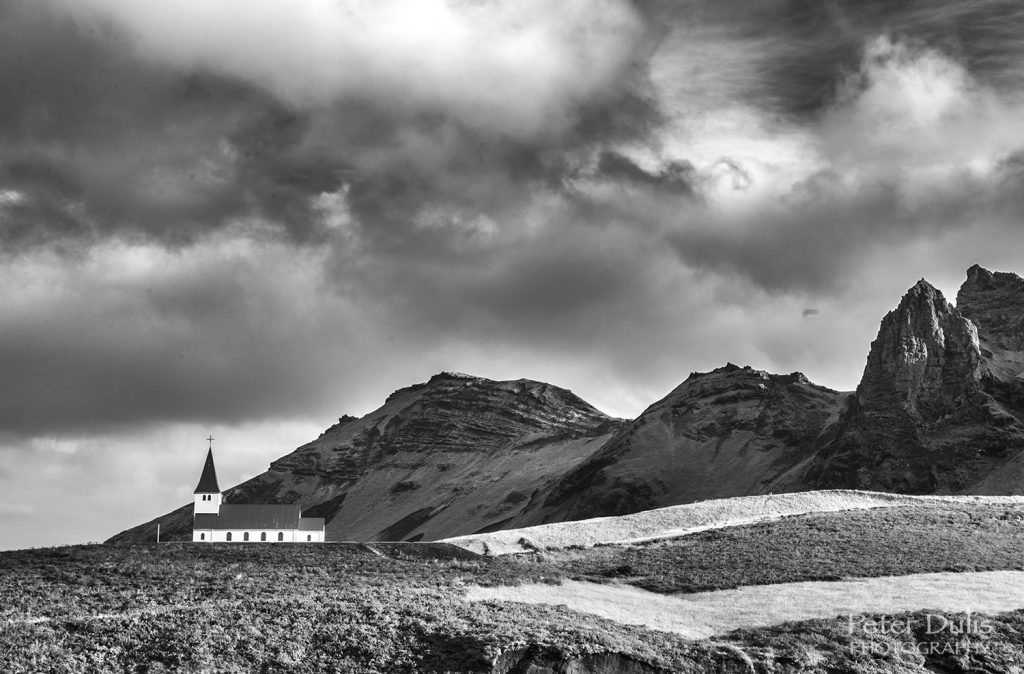
Vik Myrdal Church
The Myrdal Church in the town of Vik is easily the most popular and most photographed church in Iceland. It is located high on a hill overlooking the town of Vik, and if you are driving along the Ring Road through southern Iceland, you can’t miss it. Beautiful views from up top and down below. It is one of the best iconic places in South Iceland and if you are lucky enough to travel through during spring, the fields are covered with flowers! This photo was taken with my Canon 6D camera with an EF-70-200mm lens; in AV mode at 1/125 sec; f/11 with an ISO setting of 100.
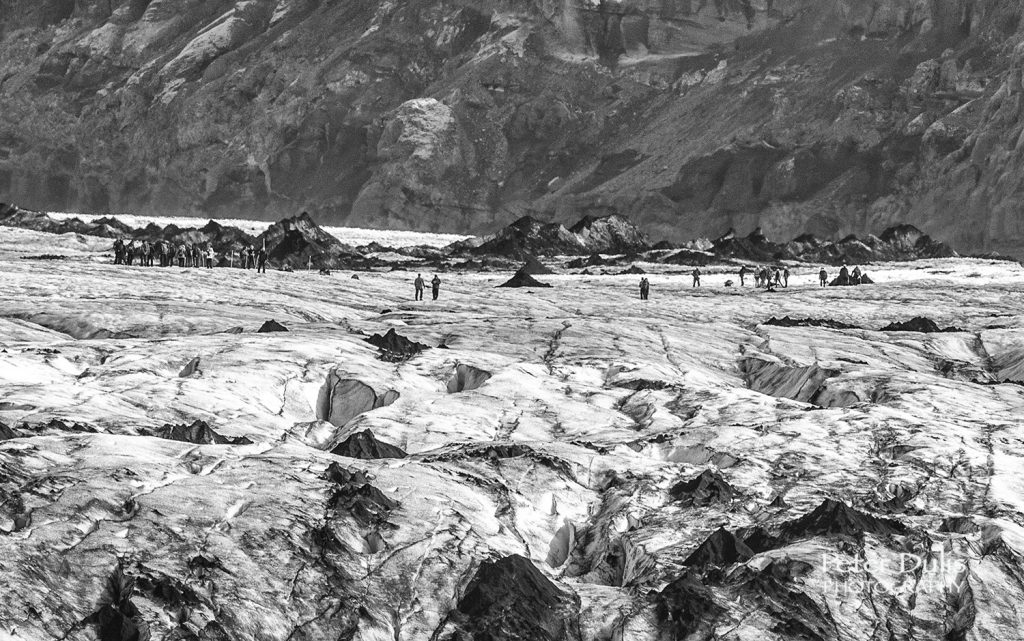
Myrdalsjokull Glacier
Mýrdalsjökull is a glacier in the south of the Icelandic highlands, close to the town of Vik where we stayed. It is the country’s fourth largest ice cap, covering nearly 232 square miles. It is most well-known for sitting atop the notorious and explosive volcano, Katla. Here you can take guided glacial hike and ice climbing. I stood well back with my 200mm lens. This photo was taken with my Canon 6D camera with an EF-70-200mm lens; in AV mode at 1/80 sec; f/11 with an ISO setting of 200.
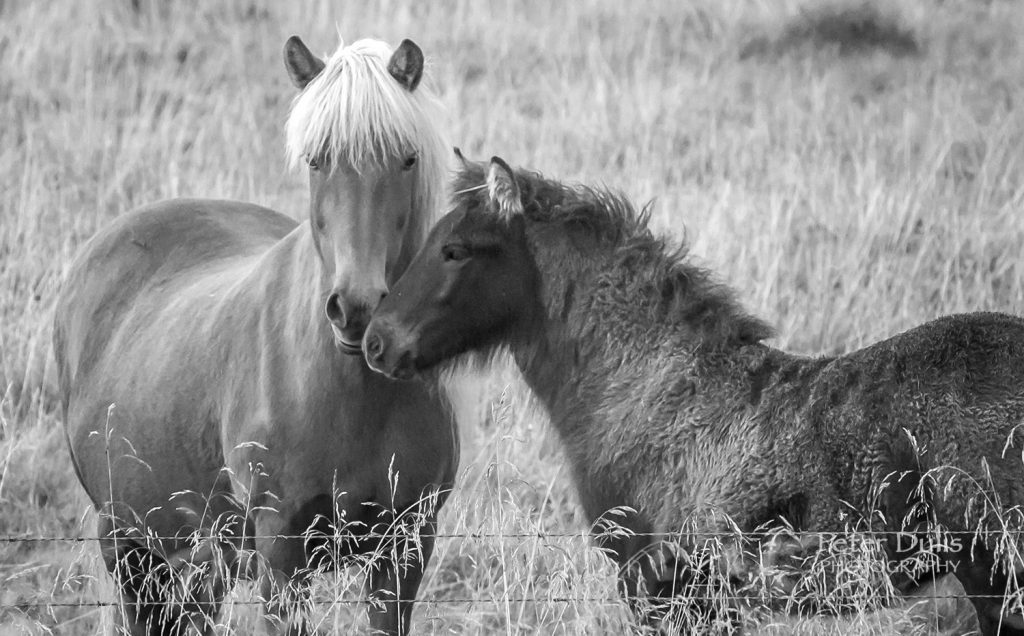
Icelandic Horses
The Icelandic horses are a special breed of horse developed in Iceland. Like Iceland they are small but strong. They are so easy-going and friendly and I love their mop top hair that looks like they could be a members of a 1960’s boy band. This photo was taken with my Canon 6D camera with an EF-70-200mm lens; in AV mode at 1/200 sec; f/9 with an ISO setting of 3200.
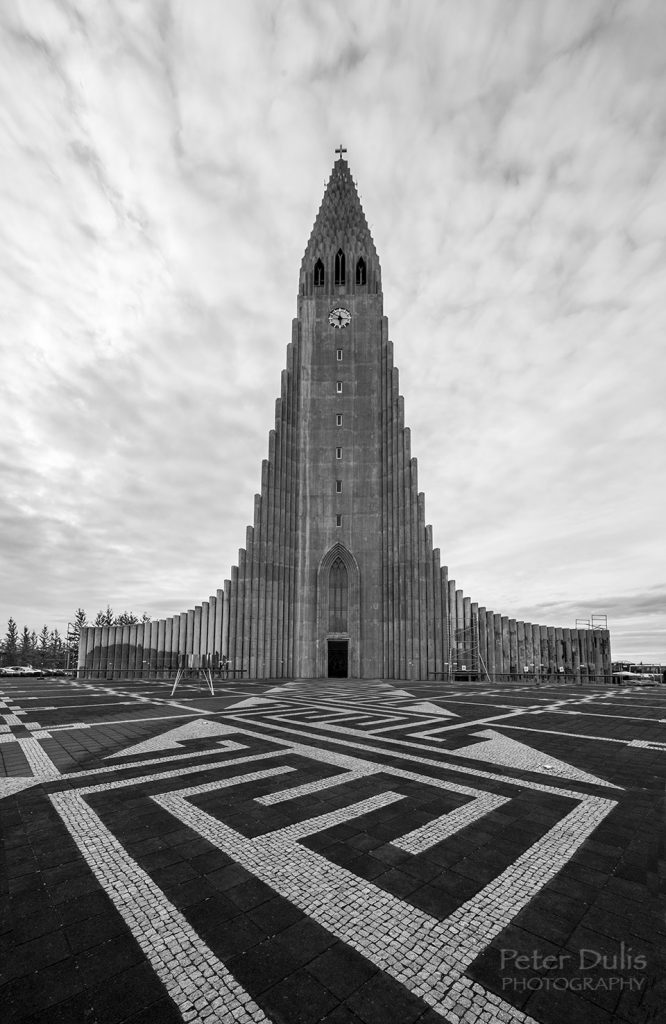
Reykjavik Church
When anyone speaks of the Reykjavik Church, this is the one they are referring to. Hallgrímskirkja (Reykjavik Church ) is at the center point in downtown Reykjavík and without a doubt the most grandiose building in the area. Guðjón Samúelsson was the architect for the project and he is said to have found inspiration in the heavenly waterfall Svartifoss with its hexagonal basalt columns. In Hallgrímkirkja’s lobby you can, for a small fee, take the lift up to the church tower. Definitely worth it. This photo was taken with my Canon 6D camera with an EF-24-105mm lens; in AV mode at 1/60 sec; f/11 with an ISO setting of 100.
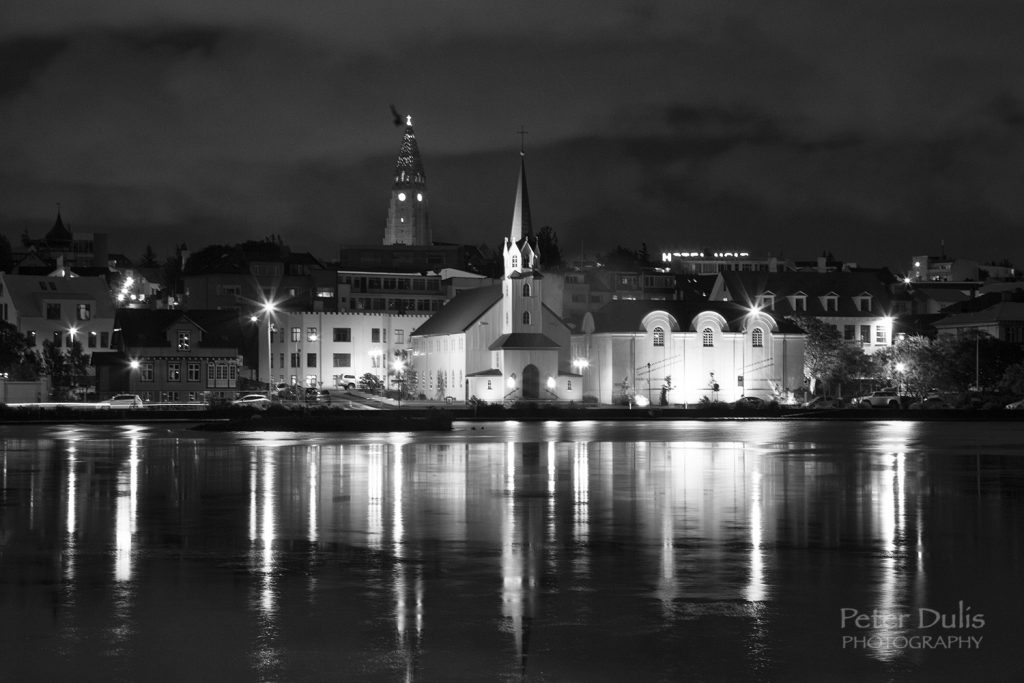
Fríkirkjan Church, Reykjavik
The tin-clad Frikirkjan church in Reykjavik is a wonderful sight at night as viewed from across lake Tjorn. You can also see the famous Hallgrimskirkja church lingering in the background. This photo was taken with my Canon 6D camera with an EF-24-105mm lens; in AV mode at 4sec; f/14 with an ISO setting of 800, camera on tripod.
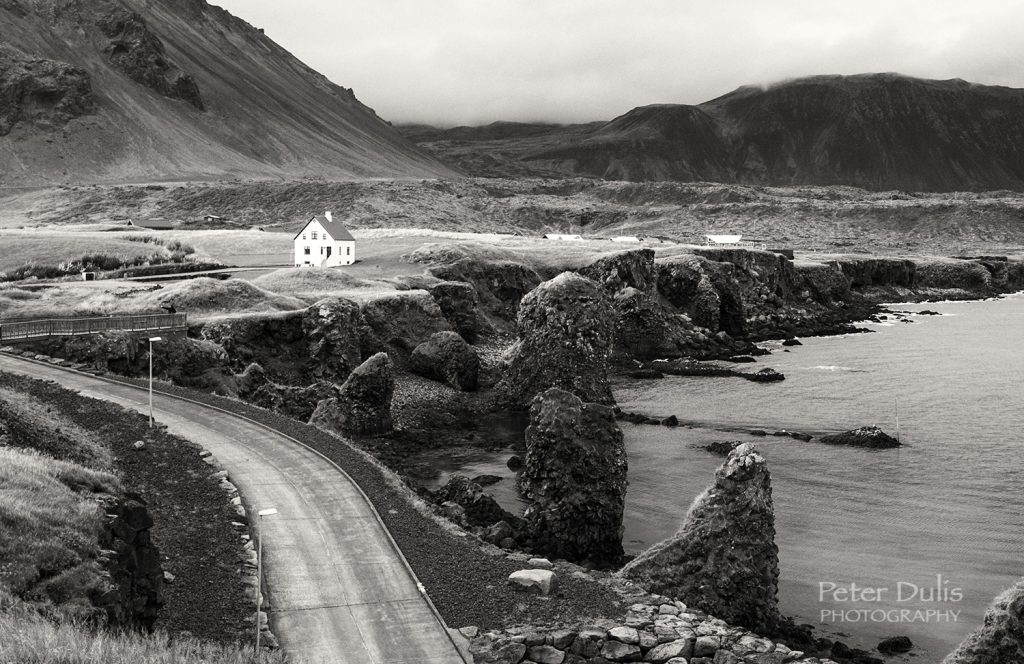
Rugged Coastline at Arnarstapi
Arnarstapi or Stapi is a small fishing village at the foot of Mt. Stapafell between Hellnar village and Breiðavík farms on the southern side of Snæfellsnes, Iceland. In Jules Verne’s A Journey to the Center of the Earth, Stapi is the last stop on the route before they climb Snæfellsjökull mountain and enter the interior of the planet through a tunnel in the crater. This photo was taken with my Canon 6D camera with an EF-24-105mm lens; in AV mode at 1/50 sec; f/11 with an ISO setting of 100.
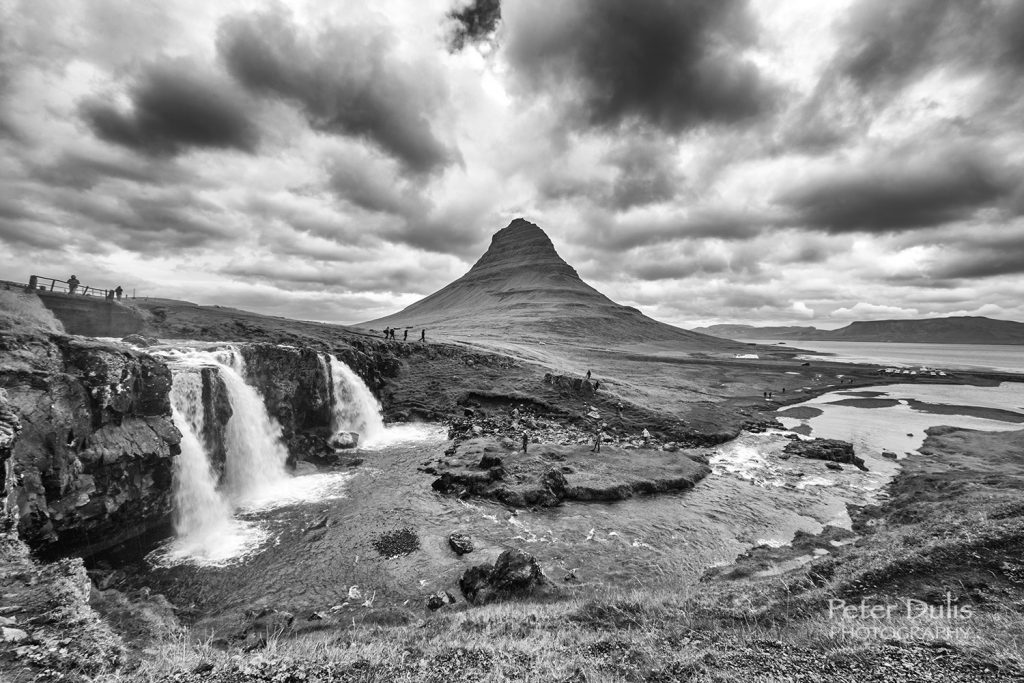
Kirkjufellsfoss Waterfall & the Lonely Mountain
We end our Iceland series at Kirkjufell mountain. Here we followed the Snaefellsness peninsula over the mountain (which was the scariest car ride ever) but we were rewarded with this fabulous waterfall and mountain scene on the other side. It was one dramatic landscape after another and a trip we will never forget. This photo was taken with my Canon 6D camera with an EF-24-105mm lens; in AV mode at 1/40 sec; f/11 with an ISO setting of 100.
We’ve decided to present this Iceland portfolio in black & white and in color to help capture the drama of this land. Let us know in the comments section which one you like better. As always, if you have any questions or thoughts, let us know in the blog comments section. We love it when we hear from you!
Hope you enjoy the photos. Peter & Susan
https://photographyadventures.ca/travels-to-iceland-a-photo-adventure/
FREE E-Book OFFER:
Travel & Photography Made EasyHere’s your chance to get your exclusive travel guide and photo tips in our 20 page e-book, along with regular travel tips delivered directly to your inbox.
- Discover amazing places to visit and how to photograph them (for non techie people)
With over 325,000 readers, TripAdvisor has hailed us as being “In the Top 1% of Popular Reviewers” plus “Top Photographer” – having visited over “90 Cities” – so here are our TOP 5 places to visit before it’s too late!

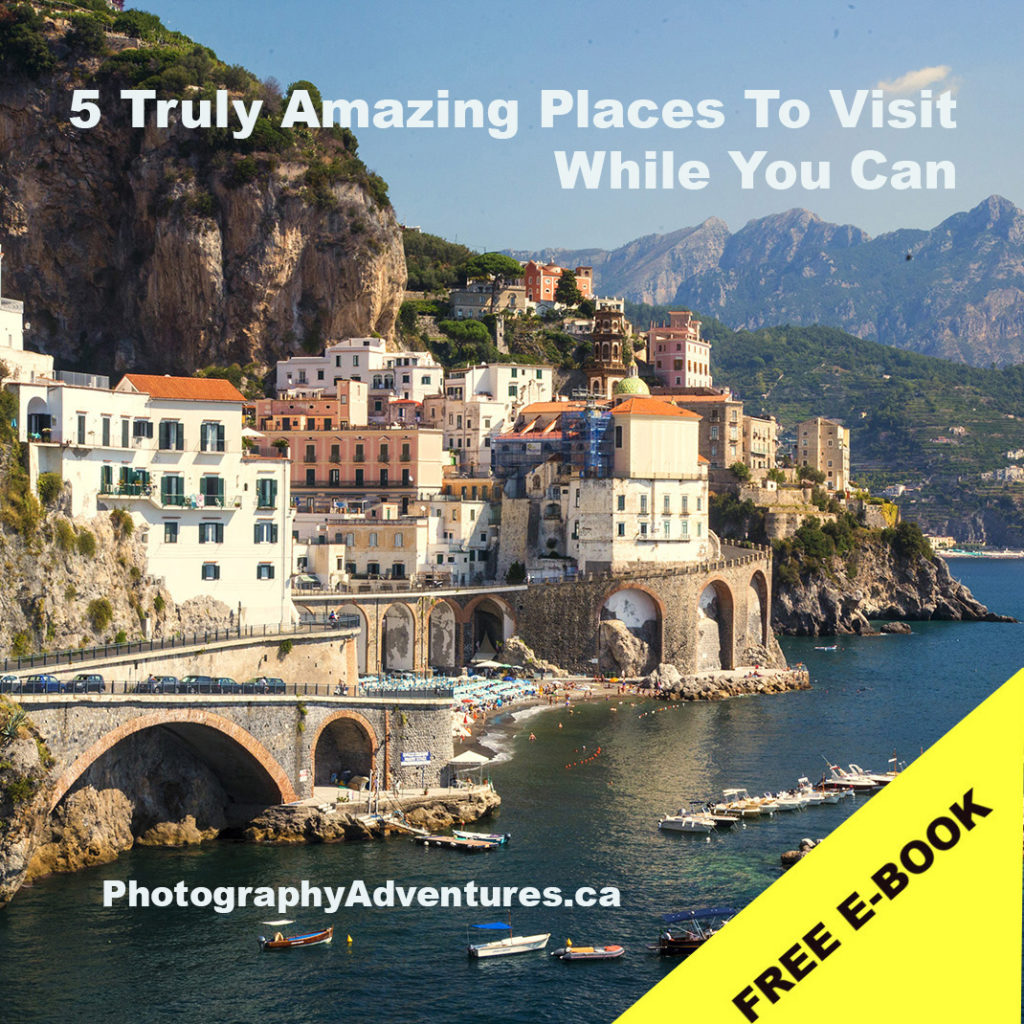
11 thoughts on “Travels to Iceland – A Photo Adventure B/W”
Enjoyed both sets. I think the ruggedness and features of the rocks stand out way more in the B&W photos. Not sure which one I liked more of the Endless Road. Both took my breath away.
Thanks so much Janice for your feedback and kind comments 🙂
https://waterfallmagazine.com/
Very nice post. I just stumbled upon your weblog and wanted
to say that I have truly enjoyed browsing your blog
posts. In any case I will be subscribing to your rss feed and I hope you write again very soon!
I much prefer the mono versions. Without the distraction of colour they seem much more dramatic.
hi Bob – Thanks for dropping by Photography Adventures and giving us your opinion – we really appreciate it
Certain photos lend themselves well to black and white as they are monochromatic naturally. While the b&w are impactful in several instances, the colour has its own power. The Myrdal Church is better with the red for impact. Loved looking at both. If I were to print any personally I would mix.
Thanks so much Eileen for your feedback – we were torn between the color + black & white . Each has there own merits – much appreciated 🙂
Very nicely composed and processed black & white.
Despite all the less than favourable reviews the 6D models have gotten (especially the Mark II) over the years, your results demonstrate that virtually any piece of reliably-made equipment will yield quality photographs…when you know what you are doing.
And I agree that the 16-35 is a great lens for travel.
Thanks Alan – you are so right – I’ve gotten some great shots with even my iPhone
ps – its the older 6D that I have (not Mk2) and the lens make a big difference as well
Thanks for your comments
While both sets of photos are great, I gravitate to the black and white version as those photos create more drama in the landscape shots and bring out more detail in the sky.
We see things every day in colour so bringing us back to our black and white roots is always a pleasant and illuminating change.
Thanks Gunther for your feedback – the photography group I belong to really liked the black + white series as well.
I’m glad my wife convinced me to put up both 🙂